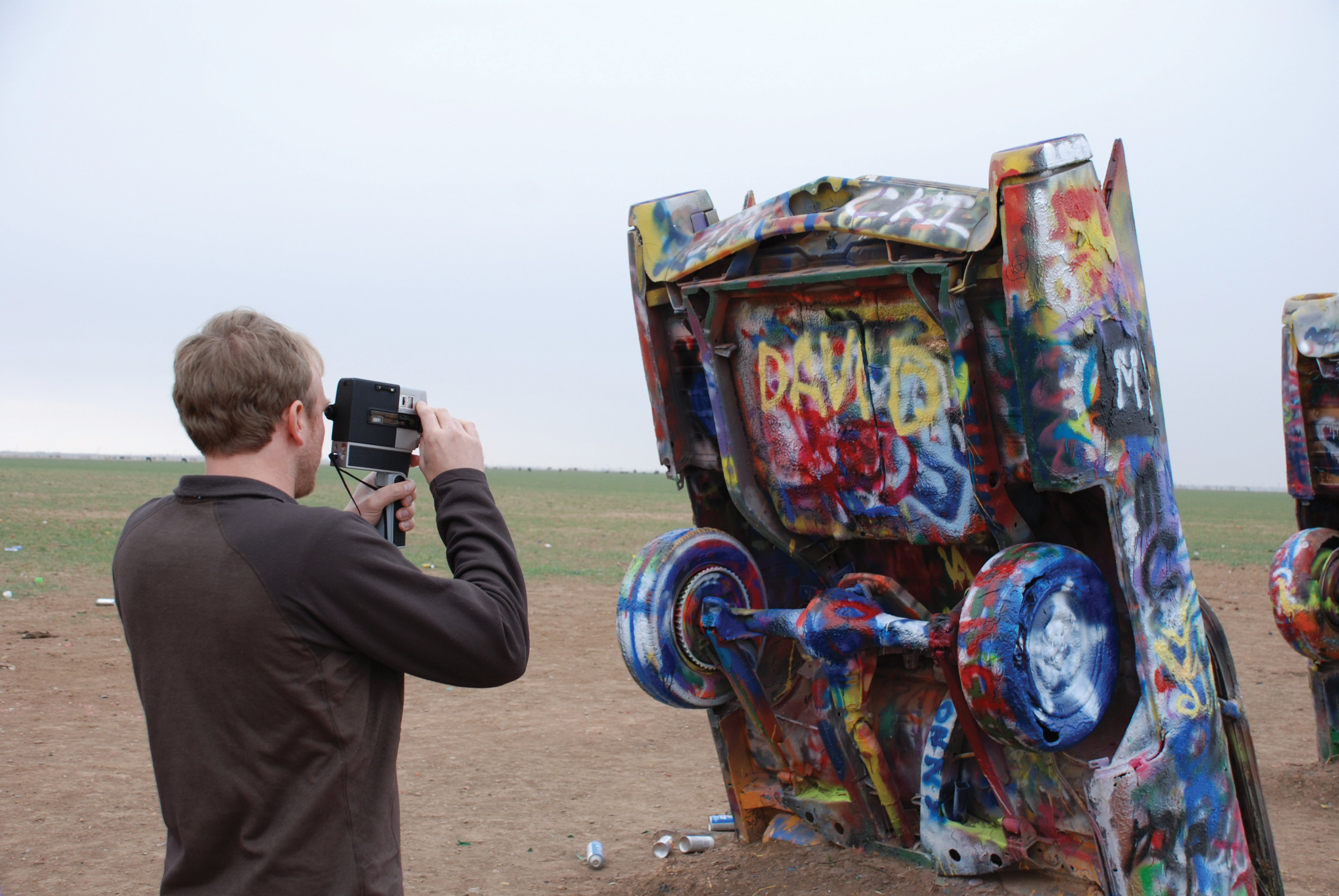REDISCOVERING THE ROAD: For decades, the Historic U.S. Route 66 etched itself into the American consciousness. Two Fayetteville filmmakers take a different look at this legendary highway with their short film “Dim the Lights.”

WORDS / MARTY SHUTTER
PHOTO / ANGELA CARPENTER
America’s iconic Route 66 and the resulting ephemera – hotels, pools and car parks – are the focus of the short film Dim the Lights, though not from the traditional perspective of Route 66’s former glam and popular place in our psyche. The film by Dwight Chalmers and Angela Carpenter of Fayetteville was shot completely on color 8mm film.
“The idea of decay would not have been as strong filmed through a different medium,” says Carpenter.
Dim the Lights follows the highway west towards Santa Monica, and en route we see building after building, sign after sign, and car after car left behind. Once a staple of American culture and a sign of the automobile’s impact on our society, Route 66 has been left behind by time, forgotten when the major highways came and barely seen by today’s traveler.
“The structures shown in this film play a key role in explaining the life of the road during its rapid growth in American culture. Mostly you see reminiscence of a life that existed in support of the car,” says Carpenter.
Throughout, the film feels as if it is about to tell you something, some great and hard earned truth, as if a narrator or some outline or bit of story is about to reveal itself.
“The editing was mainly performed in-camera because of the travelogue style,” says Chalmers. “There is no shot-list and what you shoot becomes your timeline and that is based off of what you experience while you are there.”
The familiar tropes of documentary and narrative storytelling never appear, rather the viewer sees a story that is still being told. We are not watching still-lifes of a graveyard, for the highway still flows nearby. Occasionally, a modern train passes, a bird flutters into the open hood of a rusting Buick… We are not watching a history of Route 66, rather a moving portrait of its most recent chapter.
“This film, I believe, shows an interesting representation of what might seem like abandonment, but in fact is showing how these structures have now become what’s known as the landscape,” says Carpenter. All that sprung up around the highway and bled into our culture and psyche are still there, though nature and time are clearly taking back the scene.
“The music really helped decide how the story would develop and help support the journey,” says Chalmers.
A soundtrack full of comforting bass tones beneath long and occasionally unsettling arcs of higher ones was created “in 2001 when I had an experimental music show on KXUA under the name The Sleep Sessions,” says Chalmers. He continues, “The idea was to break up patterns in music using sound design and field recordings. It seemed to fit the feeling of being out there on the older parts of the route where you really do not run into many people. A desolate Western ambient feel…”
Errant sounds litter the score like the rusting cars in the visuals. Dogs are heard, cold wind accentuates a harsh, rocky hillside; the faint creaks of a train can be heard. The music doesn’t tell us what to feel, but rather leaves us primed for our own reactions, our own internal narration to the film.
Dim the Lights ends in Santa Monica and ends as Route 66 always has, at the beach. In California. Chalmer’s and Carpenter’s visuals of Santa Monica Beach are reminiscent of 60’s California tourism promotional videos with the people removed and the ominous beauty of Chalmer’s score replacing the crash of waves, caw of birds and sounds of fishermen on the pier’s end.
“When I am filming, I seem to look for the hidden corners. If everyone is looking up, I look down. Shooting in this style has made me realize that you need to capture the subject when you have the inspiration,” says Chalmers who adds, “…don’t wait too long.”
Dim the Lights has been shown in several festivals from Arkansas to LA to Canada. It has been awarded Best Experimental Film at the Victoria Film Festival and Best Experimental Film in the online fest: “Best Shorts Film Competition.” Dim the Lights is one of four films Carpenter and Chalmers have made in this manner. New York, San Francisco and Italy have also been their subjects and the four films will be shown at festivals over the next four years.





Comments